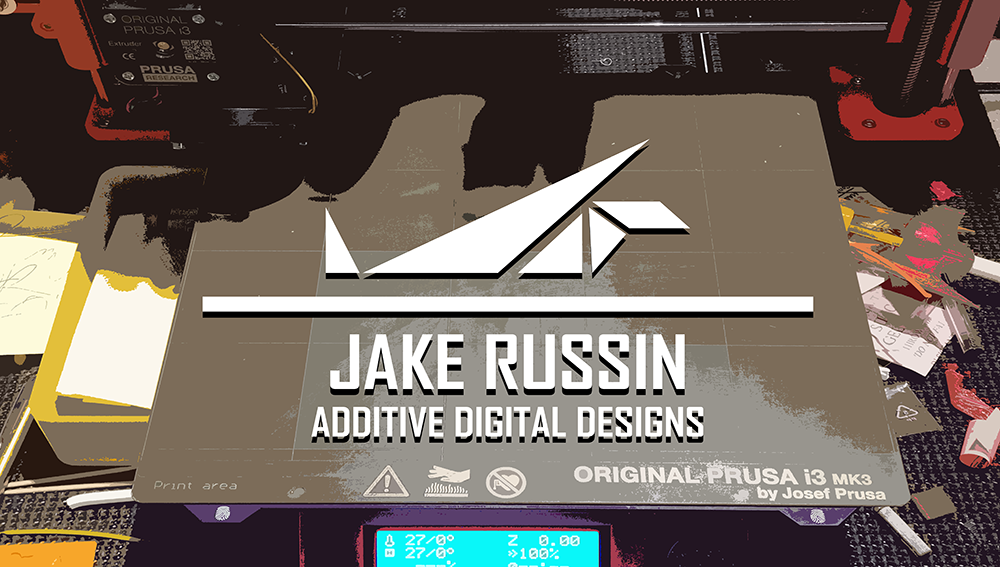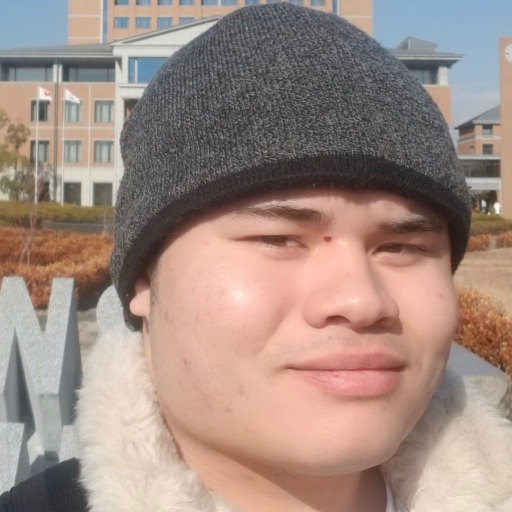Creator Bio:
My name is Jake Russin and currently I specialize in 3-D printed digital designs. Since my freshman year I've taken IMM classes branching into various aspects of multimedia from 2D animation to game design in the hopes of finding a particular niche. Each class presented a potential field to follow and though while enjoyable, I just couldn’t see myself doing some of them . It wasn’t until my third year where I discovered the limitless potential of digital fabrication and how I could make my creations come to life. This thesis is the culmination of my niche and the skills I’ve accumulated along the way.
Project Overview:
"ADDITIVE DIGITAL DESIGNS" is my effort to dive into the world of digital fabrication by designing, prototyping and assembling 3-D printed objects. The main theme consists of various life sized interpretations of items/props derived from pop culture.

Challenges along the way:
What posed a large challenge for myself was the design and prototyping process for the items. Trying to design the items faithful to their source material as well as making sure they could be assembled successfully was rather tedious. Mere hundredths of an inch could spell whether or not something could successfully fit in a slot that held crucial parts together. Messing up could cost me hours of work and meters of printing materials. I also learned to take into account the limits on what was both feasible and efficient with only a single 3-D printer.
Development Process and Tools:
The development process at first was more or less just trying to practice CAD fundamentals in Autodesk’s Fusion 360 program. The earliest designs I created were merely a combination of what little I knew of the program itself with a ton of eyeballing involved. With each new design, I learned more about the program’s tools, which allowed me to make better design choices in terms of assembly. With prototyping I would start out on a small scale before I felt confident to print the actual size. It gave me a rough estimate of what each object would look like at a fraction of the timer and materials used. When it came time to print the actual object, I’d make sure all of the print settings were accounted for such as strength, internal structures and supports. Everything had to be perfect or else the mistake wouldn’t be realized until hours after.
The most crucial tool in my arsenal was my own 3-D printer. Built by myself from a kit, before I only had a very basic knowledge. Building my own allowed me to know the ins and outs and have a personal stake in the process. It also meant that I wasn’t clueless in the event of mishaps. In addition to that, I had amassed a decent amount of pla filament, the most popular of choices for 3D printing. While I could paint the objects to ensure accuracy, it was rather fun to rely on the filament colors at hand to see how far I could stretch the utility of my printer.
My personal inspiration and interest:
My personal interest comes from when I first started 3-D printing in my junior year in my digital fabrication class. Until then I had only realistically worked on creative things through my monitor. My work in Photoshop and AfterEffects, Illustrator were essentially locked behind a computer screen. Digital Fabrication showed me I could go beyond that limit and bring those things into the real world. I started small and clueless, but mesmerized by it all. By senior thesis I had decided on my theme.
The themes were things from television and my childhood that I always wanted but could never get, either because they didn't exist or weren’t obtainable. I started to realize the potential of what I could do now. Things weren’t locked behind some paywall or faint hope for some future release. Instead I could do it myself.
Beyond TCNJ:
3-D printing has already become a quite popular emerging hobby and career for people. Even now you see people using their skills and machines not just to make things to sell, but things to save lives. From building homes on mars to making small business keychains on etsy, it allows anyone with the drive to do great things on their own terms.
Professional Life:
After graduating I hope to make 3-D printing an integral part of my career. I want to design, prototype, fail, design, prototype and fail and then succeed as a job. Also there are many potential applications for 3-D printing design whether that be for creative work, defense, medicine or engineering, it’ll mean that with each branch, there are new challenges to face, new designs to ponder and no shortage of new things to create and change the world.
Biggest challenge/hurdle you overcame and how?:
As I don’t have a background in engineering and assembly, designing things to fit together correctly and strong was challenging. You sometimes get ambitious with a design only to realize that it’s too light, too heavy or breaks in half with slight nudge. To overcome that I had to plan out designs more carefully and think further ahead and of course not get discouraged if it fails the first time. The magic of the 3-D printer is that it is a machine quite forgiving of failure. It invites you to, modify and test again and again until you get it right. Along the way you’ll hopefully see what works and how to do better in the future.
How you adapted to COVID situation:
It's been a bit tough with the COVID pandemic, supplies are either out of stock or are on long delays. Wasting material on things I’d like to print for fun do have to take a back seat. Though in all honesty, regardless of the virus, I have not be handicapped in any significant manner. Having my own printer means that I don’t have to rely on others and I can still continue working as planned. In fact the longer amount of “free time” I have means I can take longer on designs without dividing my attention too much.
Did you collaborate with others? How?:
For the most part, this has been a solo operation with me learning to navigate the design programs, the physical prototyping and assembly. Though I admit for some parts, I did ask for advice from my brother who has a background in engineering to impart any important tips I may need to know. Though more often he has seen what I’m capable of and he is rather confident I’ll succeed on my own.
